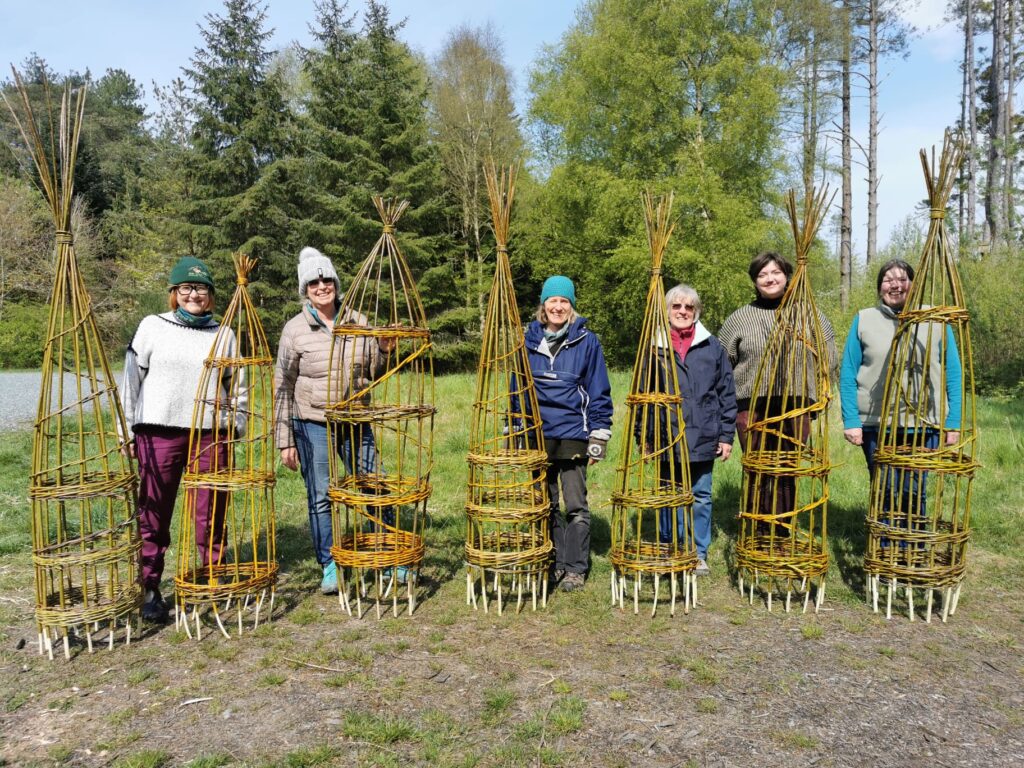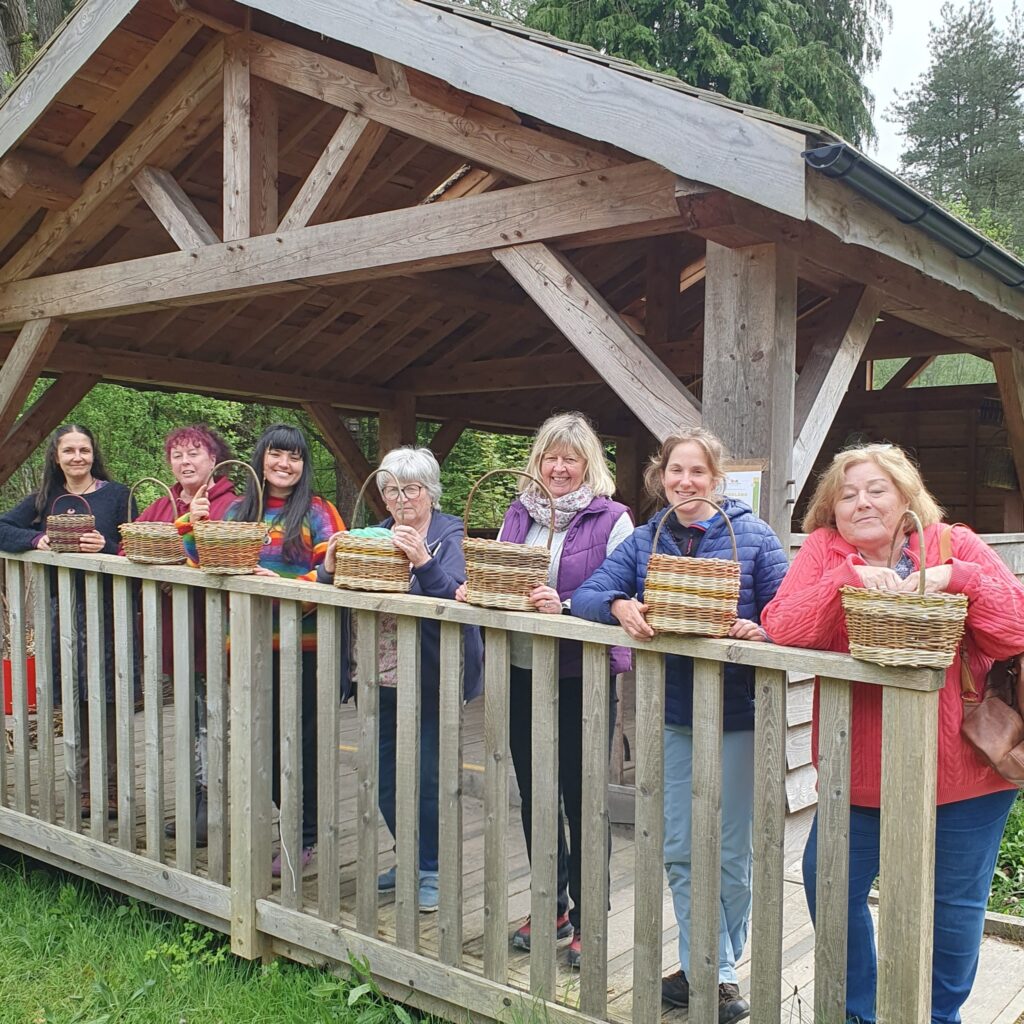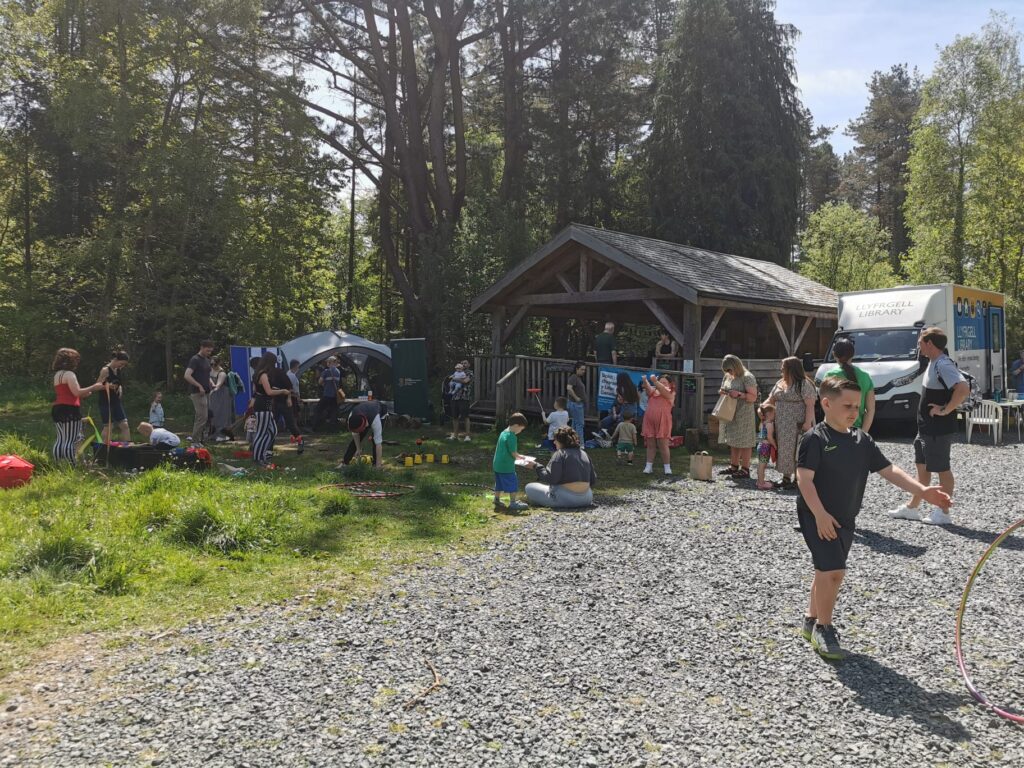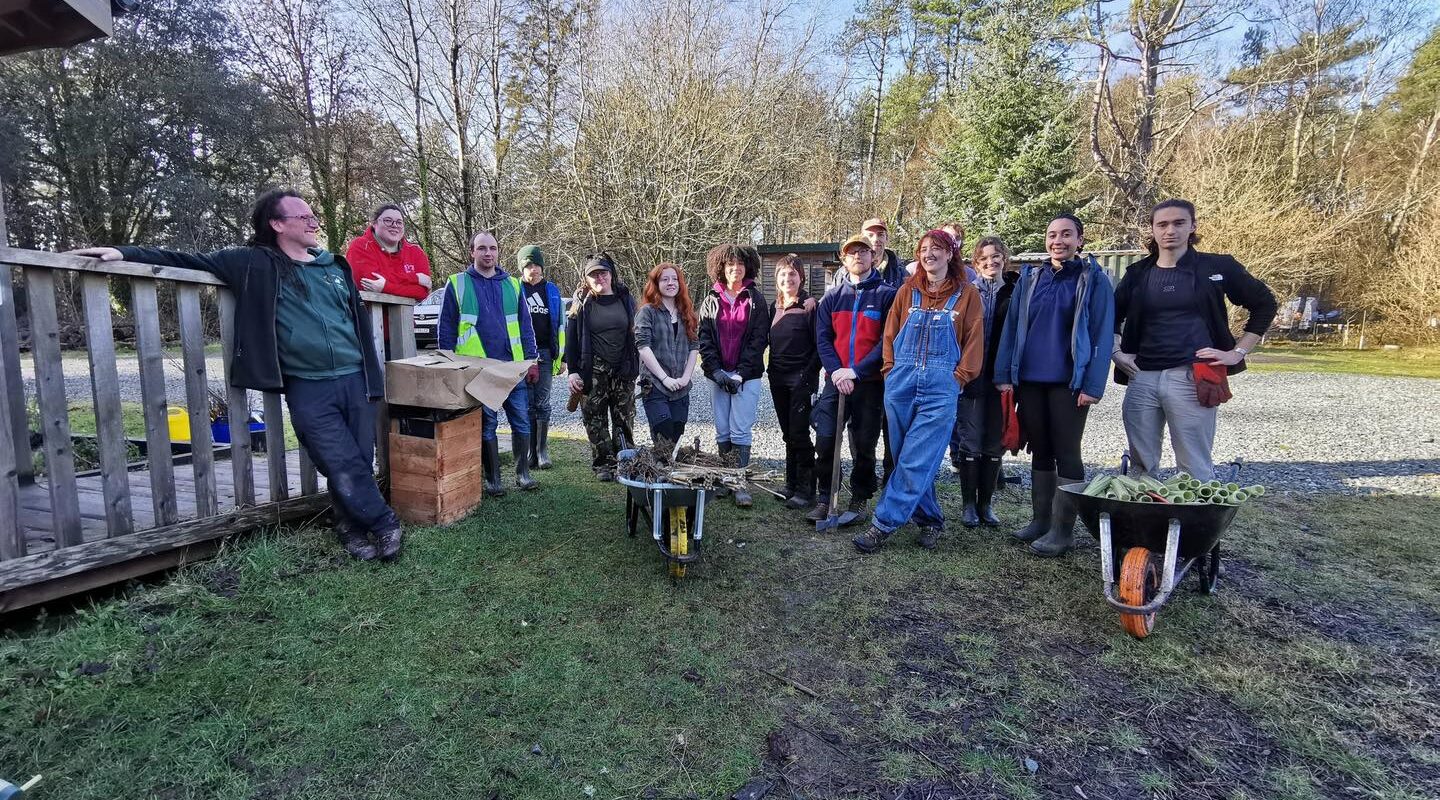Stewardship for the benefit of wildlife and the local community
About Llyn Parc Mawr Community Woodland Group
Llyn Parc Mawr Community Woodland Group is based in Anglesey, Wales. The community group manages 60 acres of Newborough Wood, known as Llyn Parc Mawr. At the core of the group’s work is the philosophy of creating a thriving woodland for the benefit of both wildlife and the local community’s wellbeing.
How does Llyn Parc Mawr Community Woodland Group make a difference?
A significant proportion of the Group’s activities relate to preserving and enhancing the woodland and its biodiversity. These activities include planting new trees, clearing invasive species, and general maintenance and upkeep.
Red squirrels are an important inhabitant of the woodland, and the group works to ensure they are protected and cared for with sufficient access to food. This also included getting planning permission from the local council to put up the first red squirrel bridge in Wales in 2017. This bridge was unfortunately damaged during Storm Darragh in December 2024, so the group is now working with Anglesey Council to have a new bridge installed.
In addition to ensuring the woodland itself thrives, the Llyn Parc Mawr Community Woodland Group also works to engage the surrounding community with the woodland, with a particular focus on reaching children and young people, as well as groups that might otherwise not visit the space. For instance, the group runs a forest school for people of all ages to come to the woodland and learn new skills.
The group is keen to keep local social history alive, and works to preserve local crafts such as marram grass and willow weaving.


The group is also keen to ensure the social history of the woodland and surrounding area is kept alive and shared. This is exemplified through the Stories of Newbrough Forest project, which showcases the stories and photographs of local residents and works to preserve local crafts such as marram grass and willow weaving.
How did they do it?
Newborough Forest was planted between 1947 and 1965, and for many decades the local community had a close relationship with the woodland. However, over time, this connection began to dwindle, and in 2014, a group of 80 residents of Newborough and the surrounding area met to discuss how they could become involved in the management of Llyn Parc Mawr.
Following several community meetings, the Llyn Parc Mawr Community Woodland Group was established and began negotiations with Natural Resources Wales to assume the management of Llyn Parc Mawr. The original agreement granted the group management of 24 acres of woodland for a five-year period; however, following a recent renegotiation, this has been extended to 60 acres for a 20-year term. The community group remains in regular contact with Natural Resources Wales as well as other key stakeholders, including the Outstanding Area of Natural Beauty department in Anglesey Council and the local nature partnership.
When the group formed, it created a constitution outlining core aims and vision, which informs its activities and ensure they align with the group’s vales. The group was established as a not-for-profit company limited by guarantee, with a board of seven directors. This structure was chosen because the organisation was not large enough at the time to be established as a charity and did not have sufficient business proposals to become a social enterprise.
The group has approximately 150 volunteers on its roster and a dedicated regular group of 15-20 volunteers.
Additionally, grant funding has enabled the hiring of three paid staff members. Volunteers are crucial to the group’s work, with approximately 150 volunteers on its roster and a dedicated group of 15-20 volunteers who regularly attend the volunteer days.

What would help unlock Llyn Parc Mawr Community Woodland Group’s potential?
- Access to core funding to cover basic costs, including rent for office space and the salary of one staff day a week, would help keep the group ticking over. Grant funding has become increasingly competitive and often prioritises new ideas rather than continuing to fund work that is already being done.
- Improvement in public transport and active travel. Volunteers are often reliant on public transport to access Newborough Forest, but the reduced bus service means they frequently wait for hours for buses.
- Many community organisations are already collaborating, and numerous online platforms are working to bring groups together. Resources should be focused on supporting and enhancing the existing platforms and networks available to groups, rather than creating new ones.
Advice for other community projects
- You need a really strong core principle to ensure that everyone knows what you are about, and that enables people to be ambassadors.
- Don’t assume people know what you’re about; be explicit in sharing your aims and vision.
- Start small, and don’t take on more than you can handle.
- Work in partnership with other organisations.

